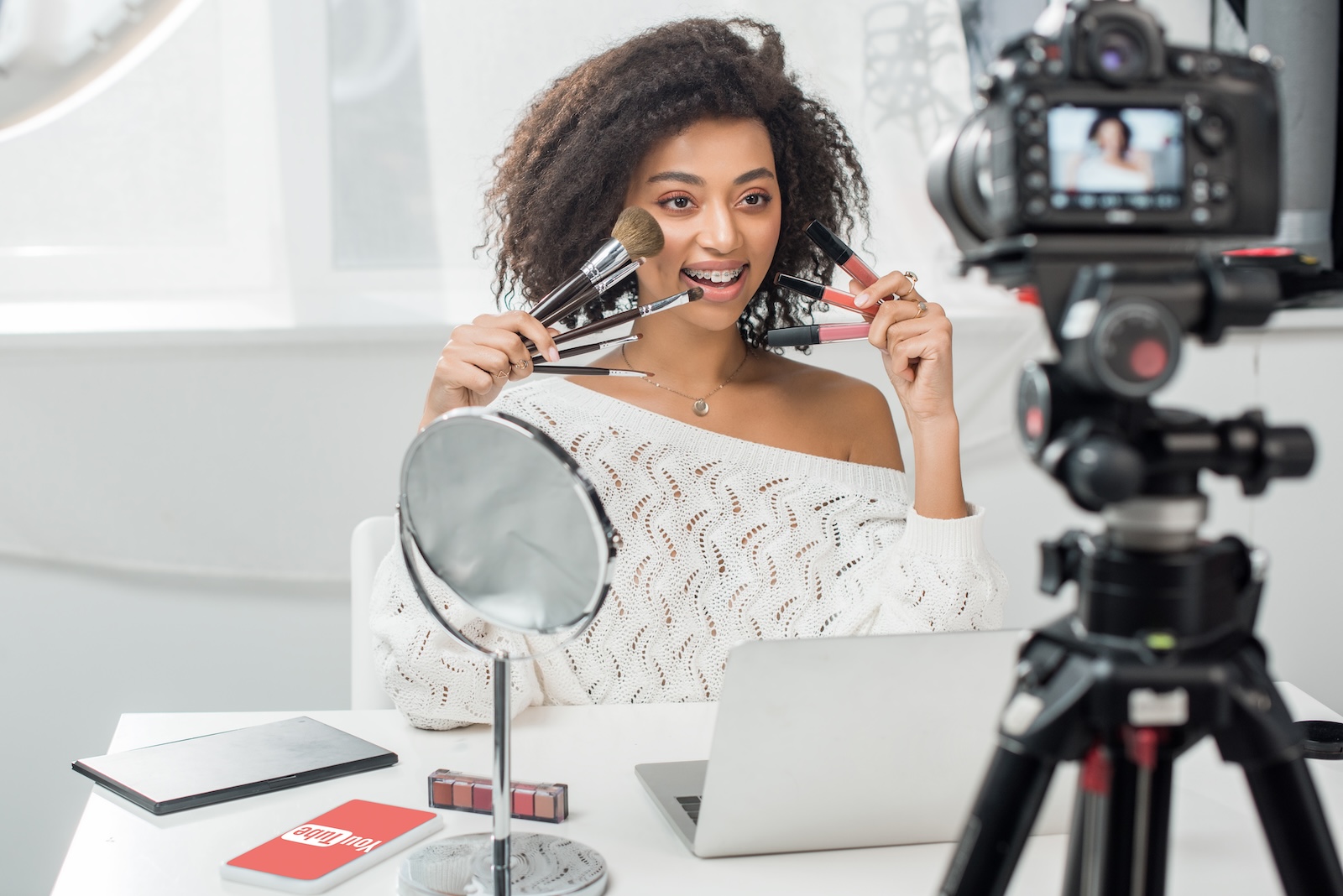How many influencer posts do you scroll past every day? If you had a dollar for each one, you’d probably be sipping something cold on a beach somewhere. The explosion of influencer marketing means there are more potential partners than ever. But that doesn’t mean they’re all the right fit for your brand.
With so many options out there, the challenge isn’t finding influencers—it’s choosing ones who can genuinely move the needle. The right partner builds trust, sparks engagement, and helps bring your brand identity to life.
A thoughtful selection process leads to better influencer return on investment (ROI). Here’s how to find the right fit.
Start by defining your goals and accounting for your audience
It’s tempting to dive right into influencer profiles, but hold off. Before you start your search, take time to define your campaign objectives and clarify your target audience. Ask yourself: “Why are we doing this?” and “Who are we trying to reach?”
When you’re clear on both, you’ll be in a much stronger position to choose the best influencers for your brand.
Clarify what success looks like for your campaign
What does success look like? Are you aiming to build brand awareness, drive conversions, increase engagement, or boost authenticity through user-generated content (UGC)?
Clear goals help you decide what type of influencer to partner with and which platforms or formats will best support your strategy.
For example:
- If your goal is to increase conversions, consider micro-influencers (creators with 10,000–100,000 followers). They often see higher engagement rates and are perceived as more authentic and trustworthy, making their endorsements more likely to drive action.
- If you’re focused on brand awareness, macro influencers (creators with 500,000–1 million followers) can help expand your reach quickly thanks to their larger audiences and high visibility.
- If you want to build deeper trust and stronger audience connections, nano influencers (creators with 500–10,000 highly engaged followers) can help you get there. These creators often have close-knit communities and niche expertise, which makes their recommendations feel more personal and more persuasive.
Your influencer marketing campaign goals serve as the compass that guides every move.
Understand who your target audience is and what they like
Once your goals are set, it’s time to define your audience: who they are, where they spend their time, and what content formats they actually respond to. This step is key to finding the best-fit influencers.
A social media management tool like Sked Social can help here. Sked’s social listening feature gives you detailed demographic and geographic insights, showing who’s engaging with your content, where they’re located, and which formats drive interaction.
These insights make it easier to narrow down your list of potential influencers. For example, if your target audience skews Gen Z, you can prioritize creators with strong reach in that group. And if vlog-style videos perform best, focus on influencers who regularly post that format.
Curate a shortlist of your ideal influencer partners
With your objectives defined and your audience mapped out, you can start building a shortlist of potential influencer partners. This step takes careful research and a clear sense of what you’re looking for, because not every creator will be the right match.
Research, research, research
Start your search on the social media platforms where your target audience is most active. Use hashtags tied to your niche to find influencers creating content relevant to your space. For example, if you’re marketing a plant-based snack, search hashtags like #veganrecipes or #plantbasedsnacks to find creators whose content and tone align with your brand.
From there, build a shortlist based on high-quality posts, preferred follower counts, and solid engagement metrics.
Check which influencers your competitors are working with and explore related creators. Tools like Sked make it easy to surface those insights. You can also explore dedicated influencer marketing platforms like Upfluence, which recommend creators based on filters like category, reach, and audience fit.
Look beyond metrics
Follower count can help you narrow down potential brand partners, but it’s far from the only factor that matters. To build successful influencer relationships, consider:
- Authentic voice: Today’s social media users, especially Gen Z audiences, value authenticity. Choose influencers whose content feels real, not overly polished or staged.
- Creativity: Avoid cookie-cutter promotions. The best partners can craft original, eye-catching sponsored content that stands out from the scroll.
- Brand alignment: Look for creators whose values, tone, and content style reflect your brand. For example, if sustainability matters to you, it should matter to them, too.
- Posting consistency: Be wary of influencers who only post sporadically or who overload their feed with sponsored content. Audiences are quick to spot overly ad-heavy accounts.
Assess potential partners’ strategic fit
After curating your shortlist, take time to evaluate each influencer’s content quality and how well they align with your overall strategy. You’re not just looking for engaging posts—you want partners who can help build trust, expand your reach, and strengthen brand affinity.
Strong candidates will:
- Share audience demographics with your target customers.
- Use content formats that highlight your offerings.
- Show consistently high engagement rates, reflecting an active, relevant following
Check their recent content for tone and alignment, ask for media kits or engagement metrics, and check follower lists for demographic overlap. It’s also important to assess past brand partnerships, especially to flag any work with direct competitors that could affect credibility or confuse your audience.
Introduce yourself and pitch your campaign the right way
After finding suitable partners, it’s time to start your outreach. Treat this like you would when pitching to potential customers: Make it personal, relevant, and worth their attention.
Start by contacting each influencer through their preferred channel. Personalization is key, especially for creators who field dozens of pitches. Mention something specific you admire about their content or how they handled a past campaign to show you’ve done your homework.
Instead of a generic “Hey, we love your content,” try: “We were impressed by your skincare series on TikTok—your SPF tutorial felt super genuine. We’re launching a new sun care line and think your style would be a great fit!”
Your message should:
- Introduce your brand clearly.
- Share details about your campaign, including goals and target audience.
- Highlight your value proposition (e.g., compensation)—do your research on influencer pricing to make a strong, fair offer.
- Include clear next steps, like how and when to get in touch if they’re interested in the partnership.
The more tailored your pitch, the more likely it is to resonate and lead to a successful collaboration.
Lay the foundation for a successful partnership
Strong influencer partnerships start with solid collaboration. That means clear communication, shared expectations, and the right tools to streamline the process for both your team and your creators.
Set clear expectations for deliverables, timelines, and boundaries
Avoid confusion or conflict by clearly outlining what you expect from each influencer before the campaign begins. Use briefs and contracts to define:
- The required number of posts over a set period.
- Agreed-upon content formats.
- Content deadlines.
- Ownership rights.
- The approval process.
- Expected hashtag usage.
- Off-limit topics.
- Reporting and performance expectations.
Laying everything out upfront helps keep partnerships running smoothly and increases the likelihood of building long-term relationships with your top-performing influencers.
Balance creativity with campaign structure and brand guidelines
As a campaign manager, your goal is to make sure influencers’ content aligns with your brand tone and showcases your offerings in the best possible light. That starts with sharing brand guidelines and using a marketing tool that makes content reviews and approvals easy.
Sked Social’s approvals feature strikes that balance.
Add influencers as collaborators to simplify content sharing, use in-app comments to give feedback, and loop in business stakeholders using no-login links—all without micromanaging the creative process.
Just be careful not to art-direct every frame. While it’s tempting, remember: creators know their audiences best and what drives engagement.
Instead of prescribing exact captions or insisting on a specific filming style, share the key talking points and let the influencer decide how to naturally work them in. Trusting their creative instincts can lead to more authentic, high-performing posts.
Offer brand guidance without the back-and-forth. Use Sked’s approvals to keep your team aligned and influencers’ content on point.
Keep communication and feedback flowing
Communication shouldn’t stop after contracts are signed or content is submitted. Regular check-ins help make sure everything runs smoothly and give you opportunities to provide feedback that strengthens alignment and results.
For this, you’ll need reliable collaboration tools like Slack and Sked Social. With Sked, you can leave real-time comments on submitted content or conversations, tag relevant influencers, and streamline revisions without slowing things down.
You can also pull influencers’ brand mentions directly into your library, so you never miss a chance to offer timely feedback.
Check out Sked’s collaboration tools to simplify how you manage influencer communication and content reviews.
Don’t forget to measure influencer marketing campaign performance
Numbers might not be the most glamorous part of influencer marketing, but they’re the secret to doing more of what actually works.
It’s rare to get everything right on the first try. Your influencer marketing strategy will likely need some fine-tuning, whether that means testing different types of influencers, experimenting with new content formats, or adjusting your posting cadence to better meet campaign objectives.
The key to making smart adjustments is consistent performance tracking. Use Sked to monitor metrics like engagement rates, reach, and brand sentiment, then double down on what works. If smaller creators deliver the highest engagement, scale your results by featuring more micro influencers in future campaigns.
You can also repurpose top-performing influencer content across organic and paid channels to extend its impact. Say that a creator’s Instagram Reel drives strong engagement. You might reuse it in a paid ad campaign or feature it in a brand newsletter. Just make sure you have the proper usage rights outlined in your contract.
Set your next influencer campaign up for success with better social media management
Choosing the right influencers can make or break your campaigns. When you work with authentic content creators who align with your audience and brand, you set yourself up for stronger results.
But selecting partners is only half the equation: you also need to manage their content effectively and continuously optimize your strategy.
Sked Social gives you the structure and tools to manage it all. With Sked’s collaboration and planning features, you can streamline feedback, approve content quickly, and schedule posts across your brand’s channels. You can also track brand mentions, sentiment, and engagement rates to identify what’s working and optimize as you go.
Want to simplify influencer collaboration and performance tracking? Try Sked Social’s tools today!










